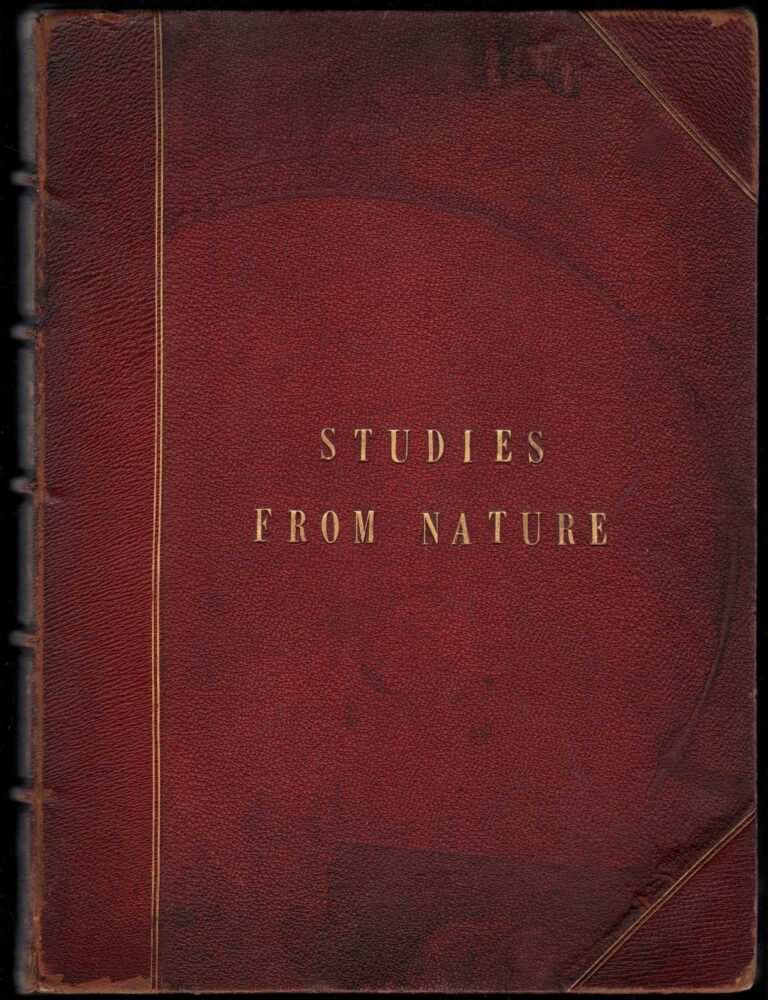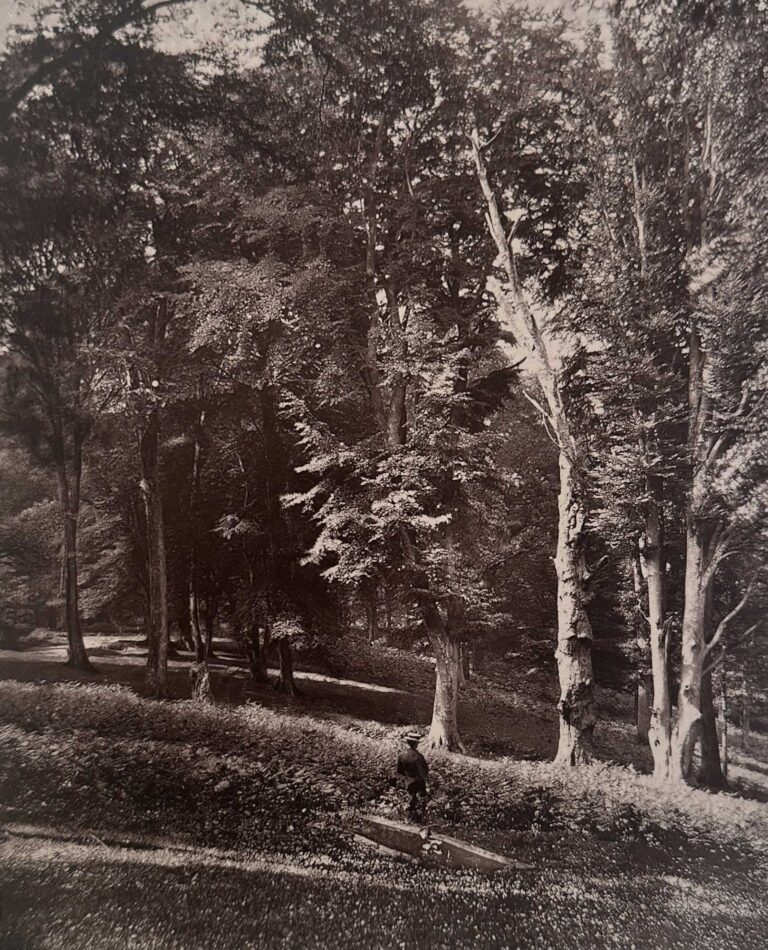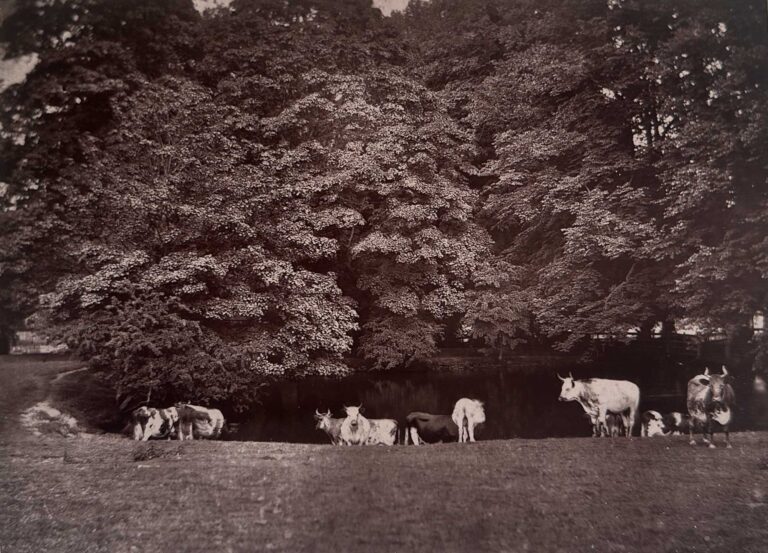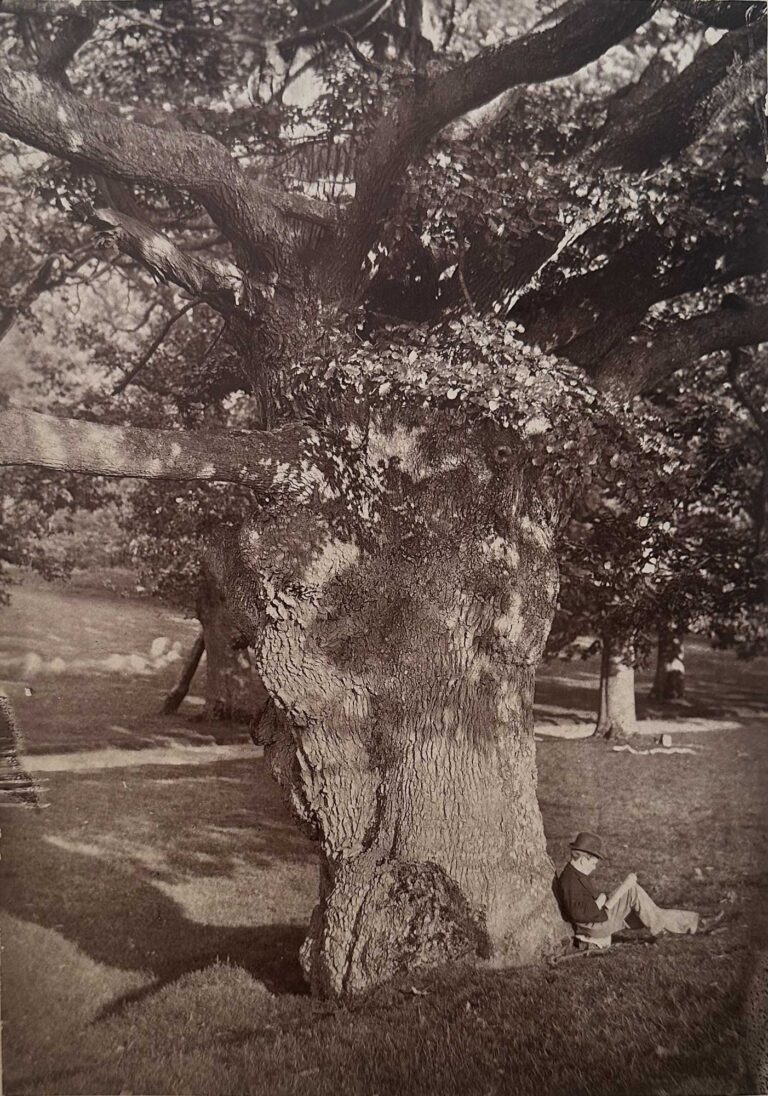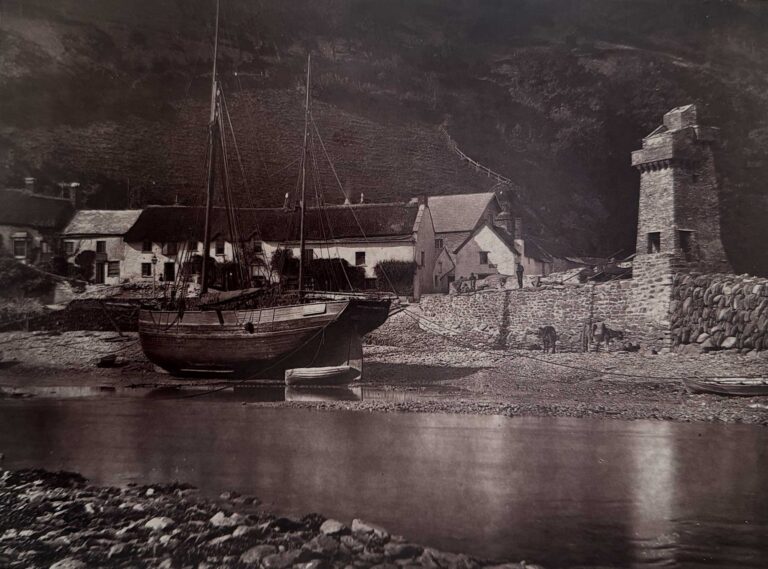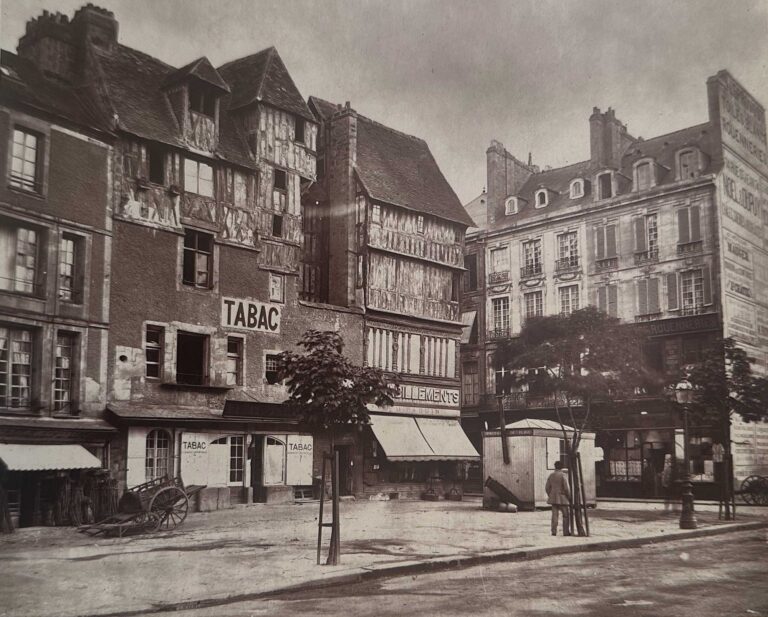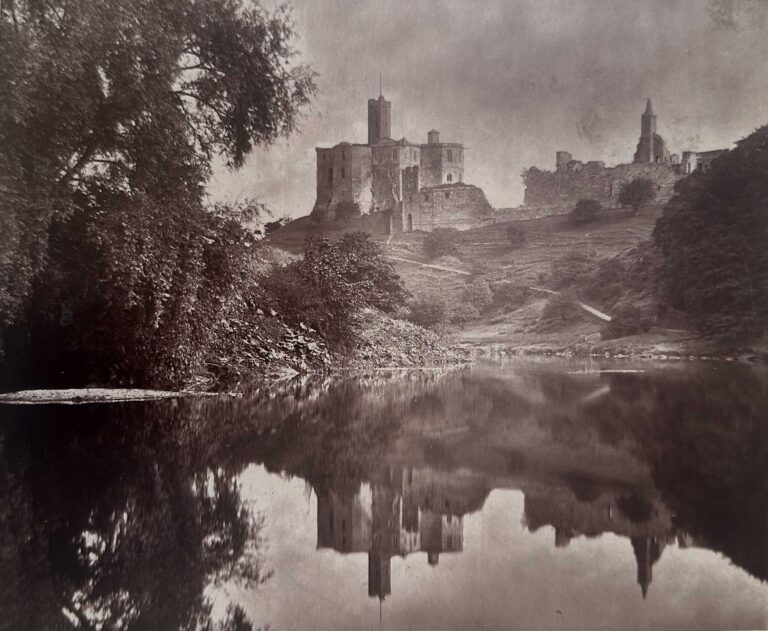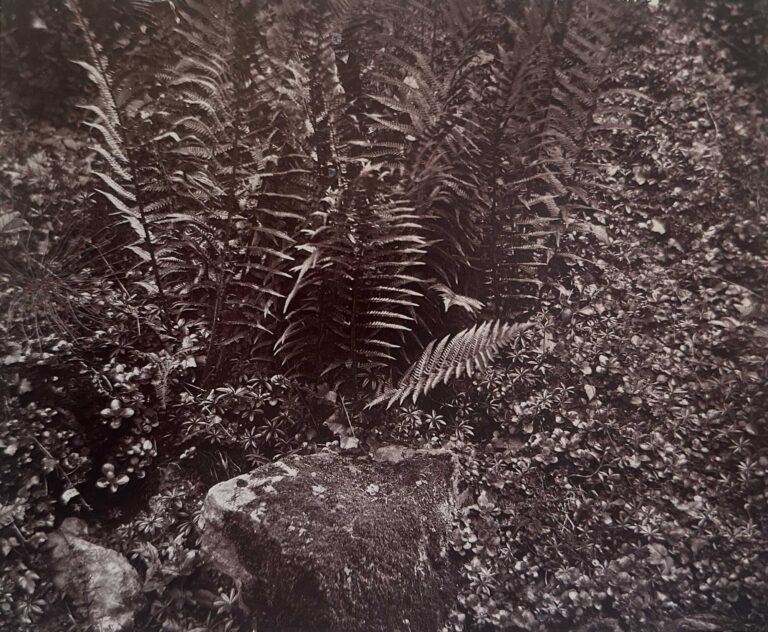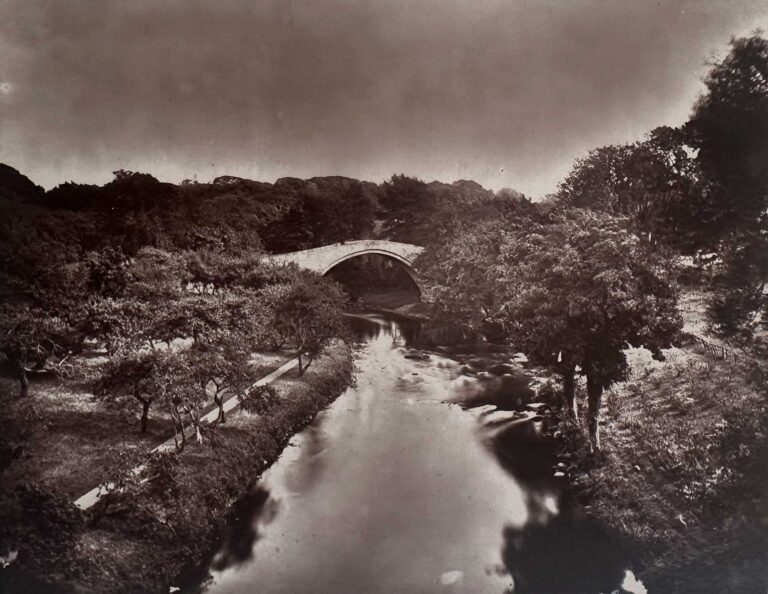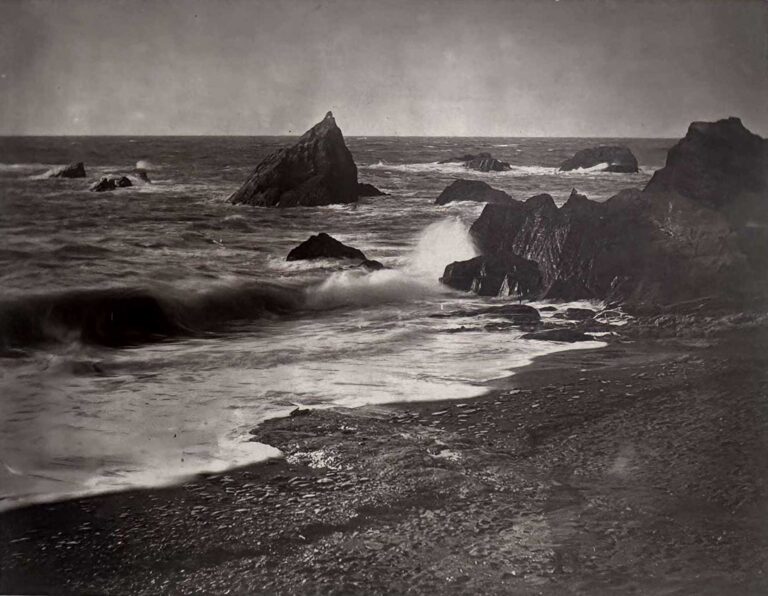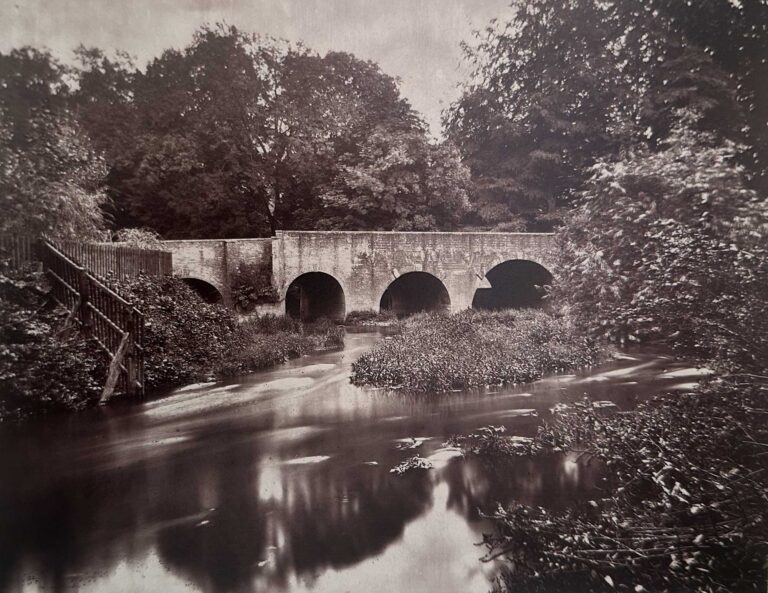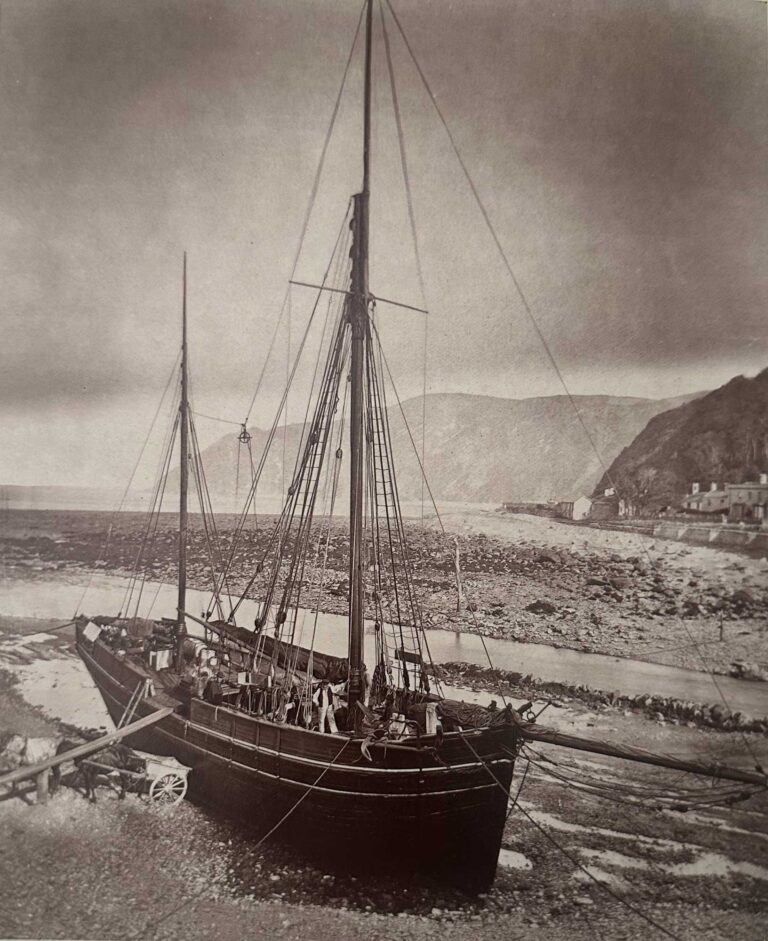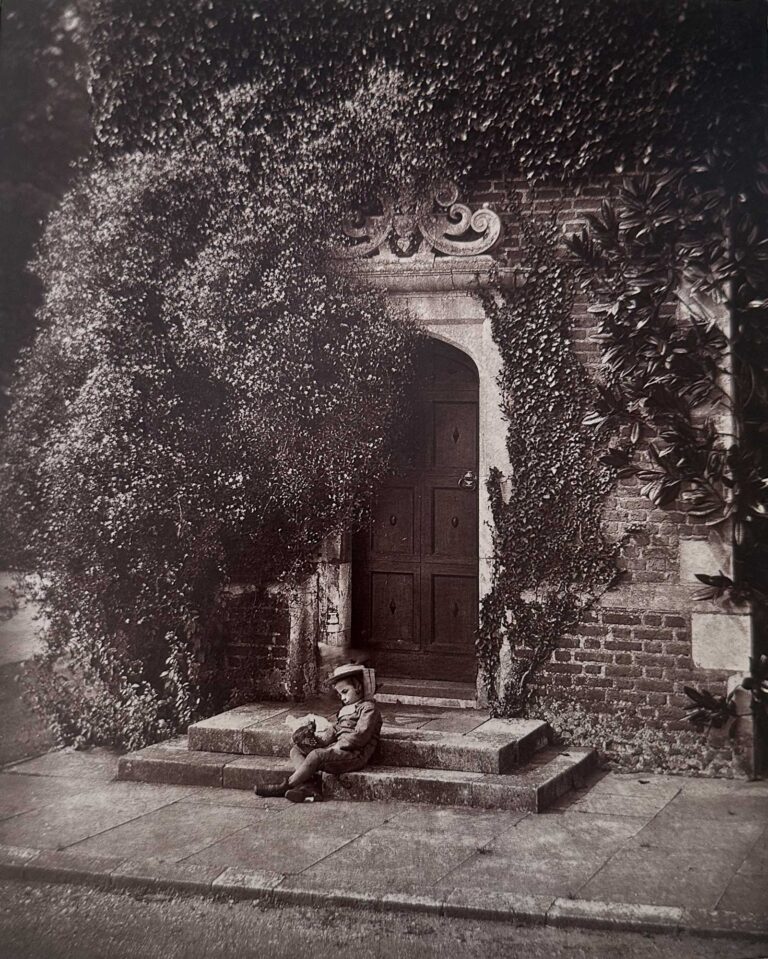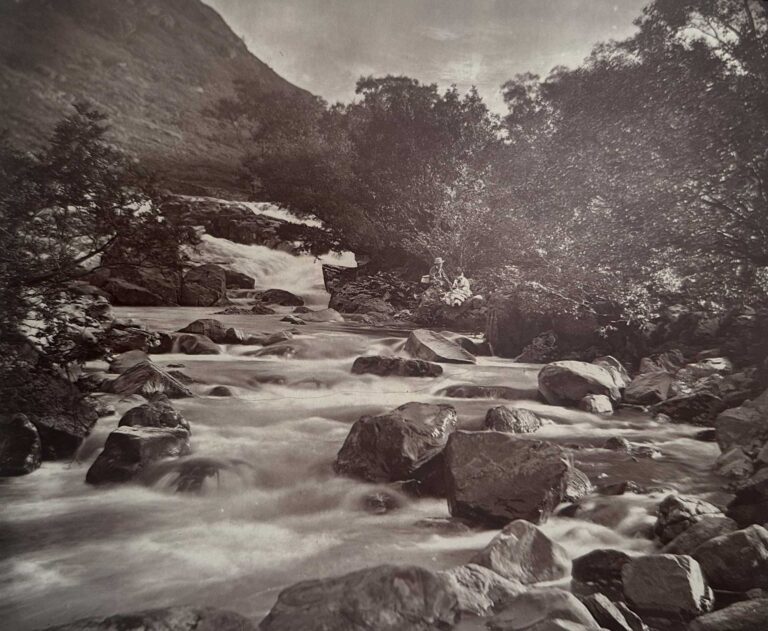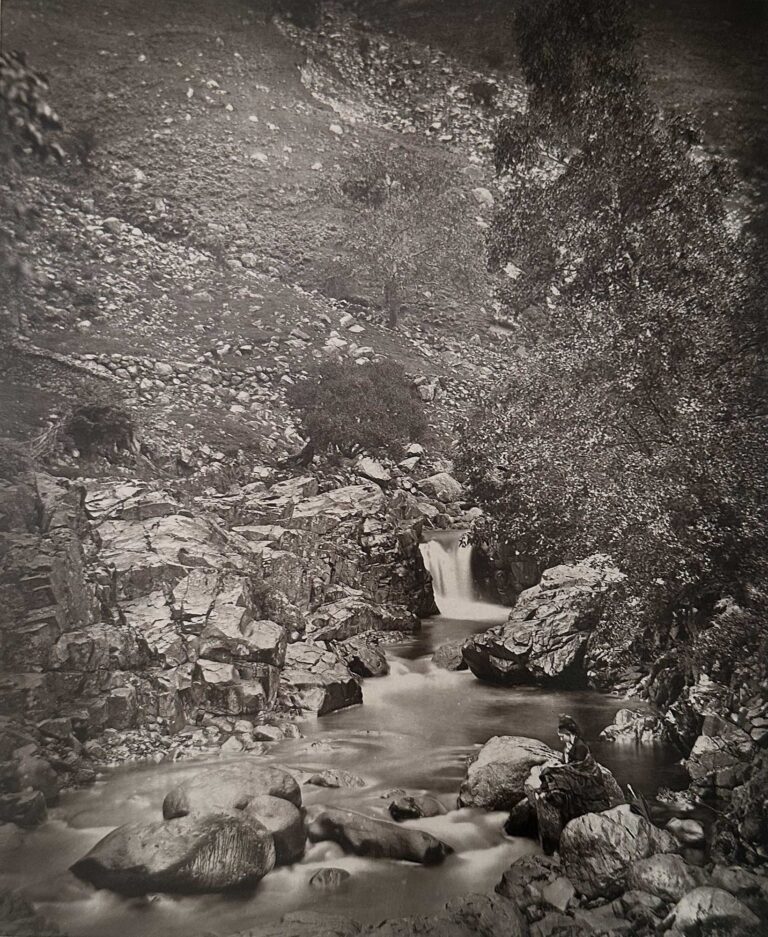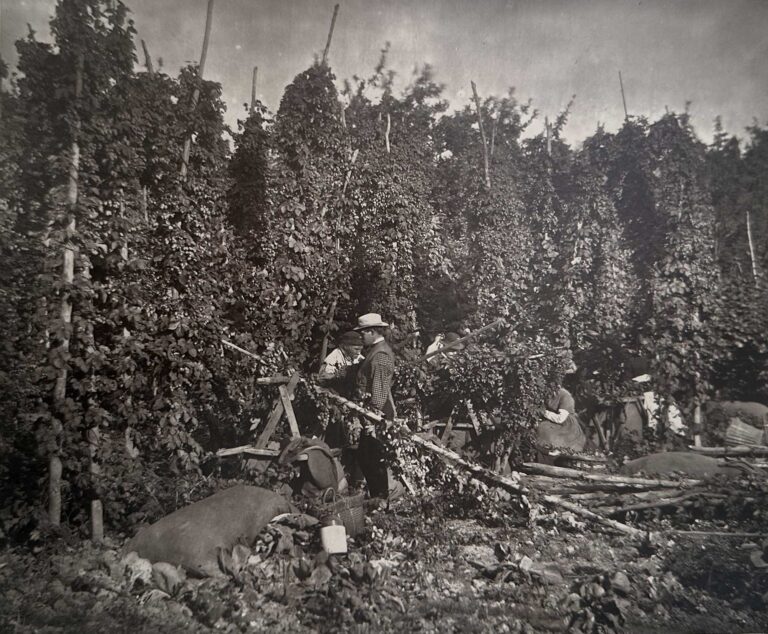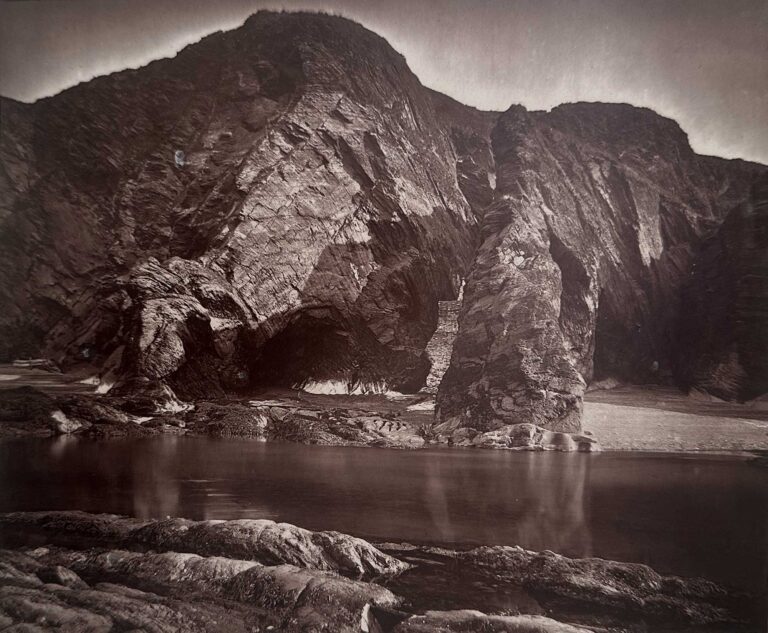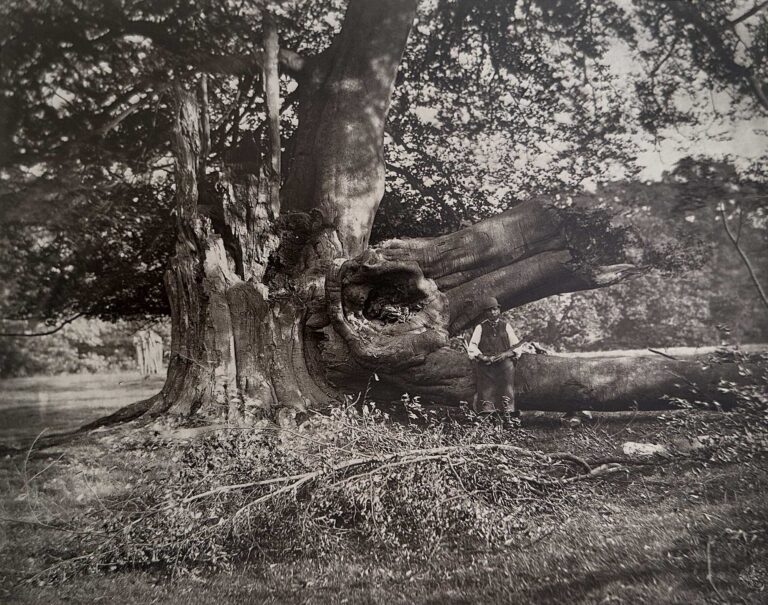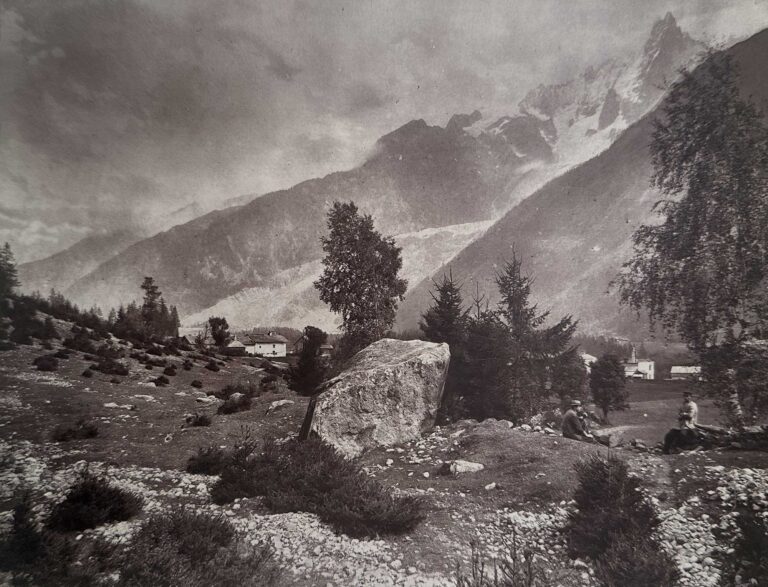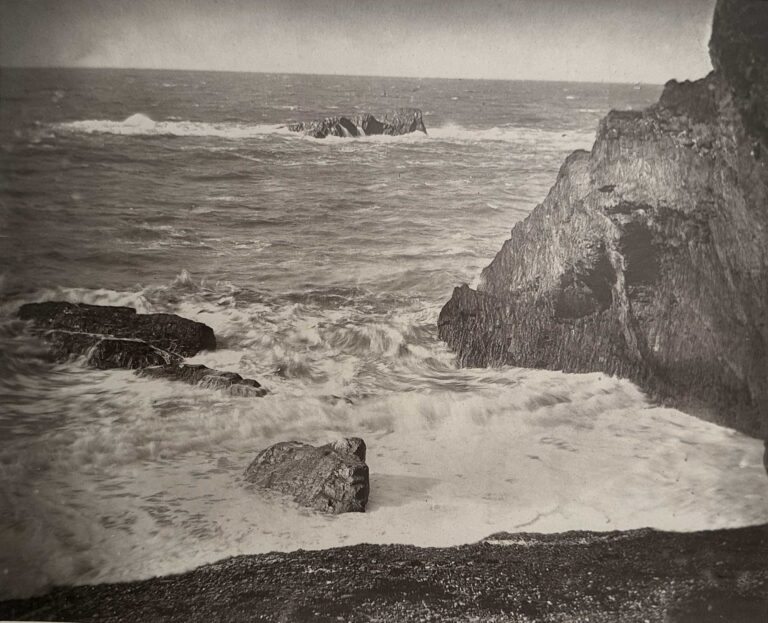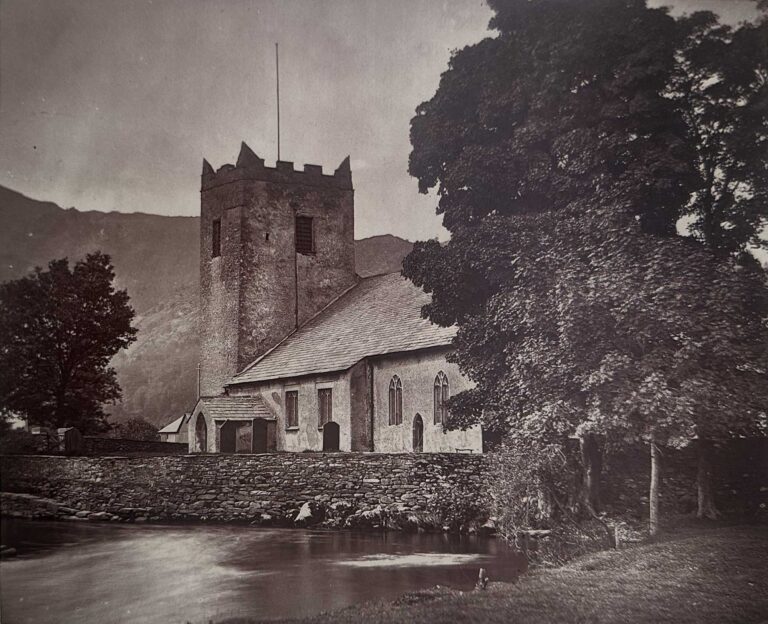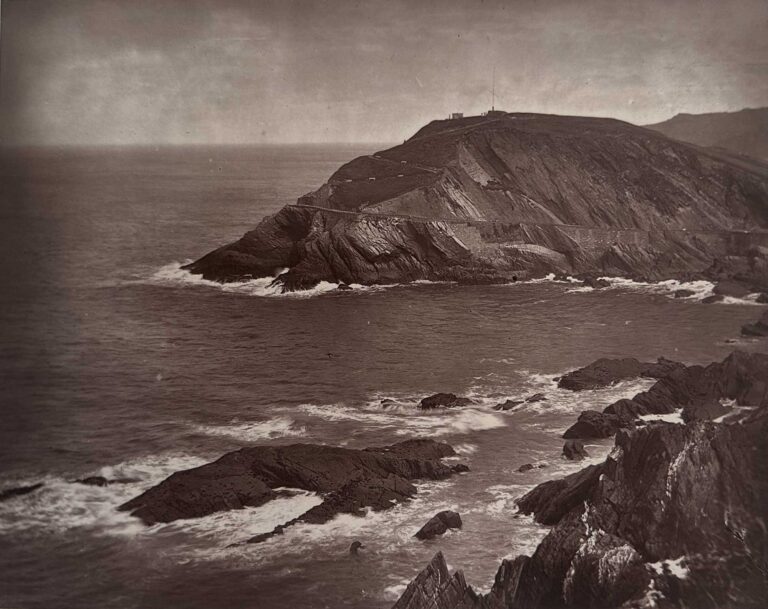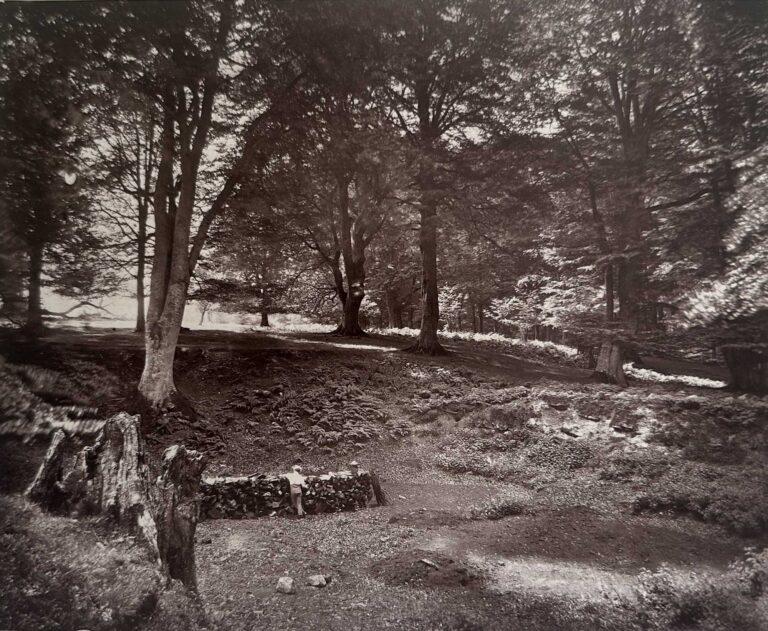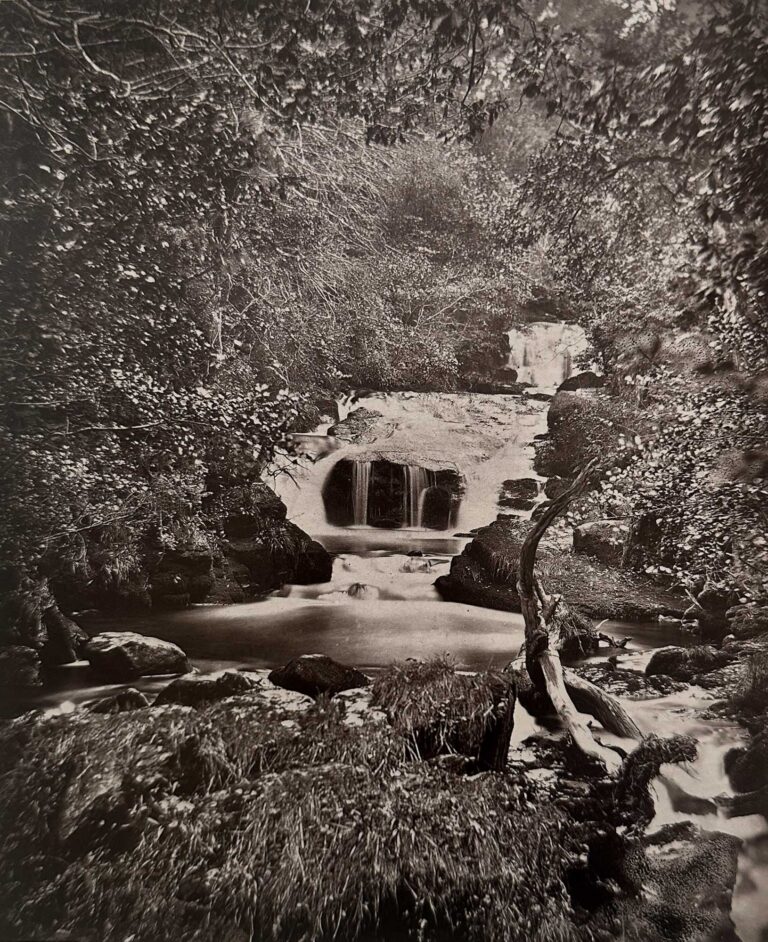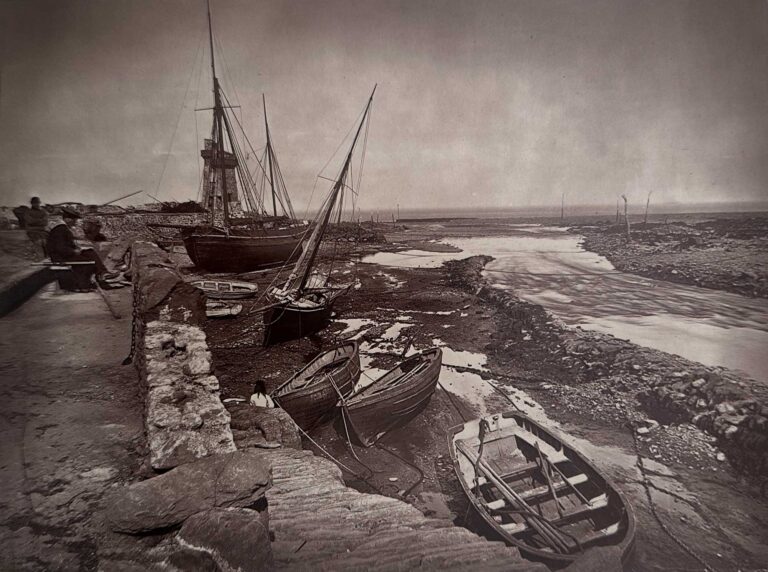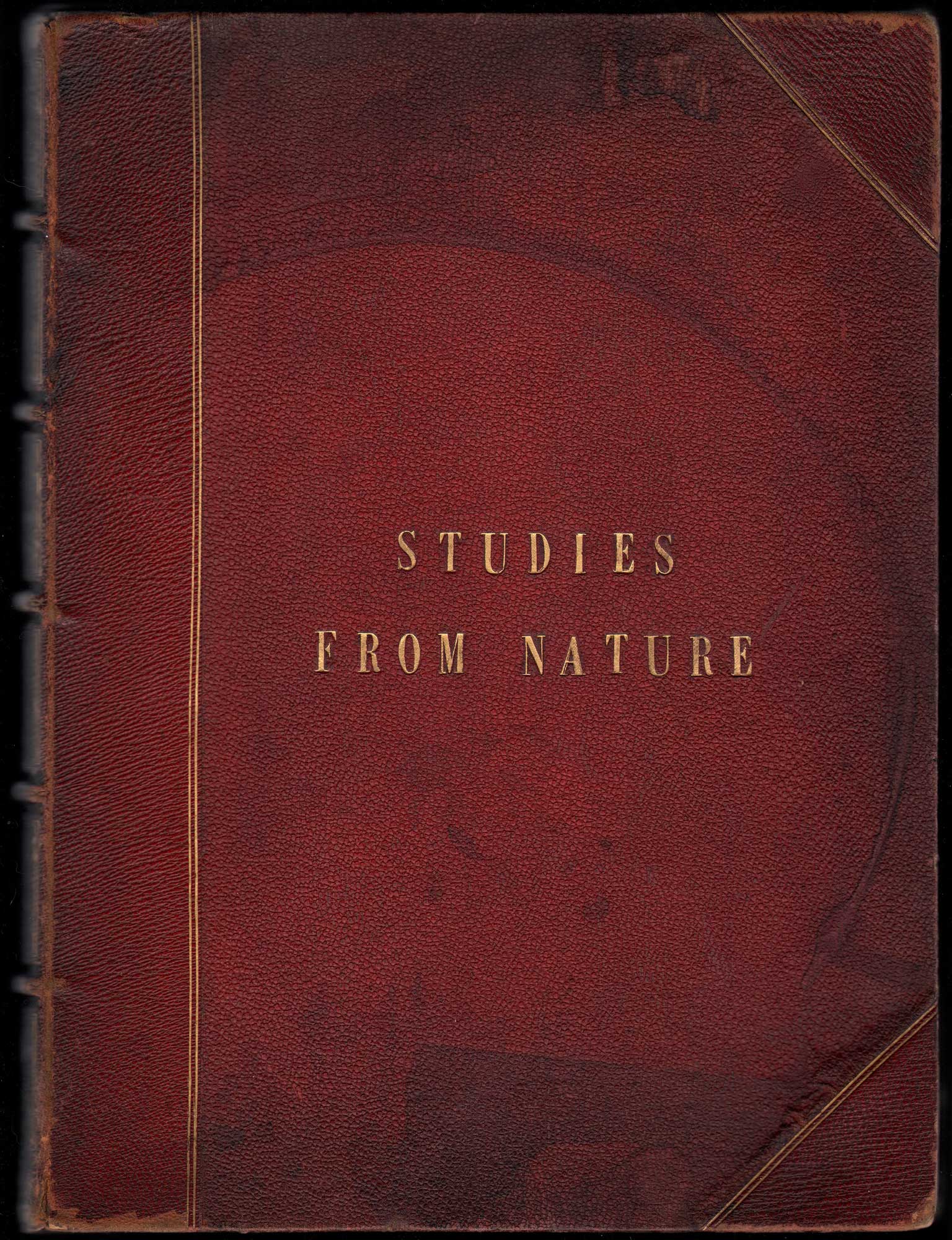
Studies From Nature
Studies of Nature is a collected folio volume of 24 artistic photographs issued by the London publisher Sampson Low, Marston & Co. from 1875-76. Published monthly beginning in September, 1875, six individual parts of four mounted “permanent” Woodburytype photographs make up the volume. They were taken by English photographer Stephen Thompson, (1831-92) with descriptive letterpress published opposite each photograph.
This complete volume features English landscapes and two French views, and is done up in full red morocco with five raised bands and gilt panels on spine; all edges gilt with marbled end-papers.
The plates are: A Beechen Slope, Knole; Summertime, Penshurst Park; The Monarch of the Woods [an oak tree] ; The Old Pier, Lynmouth; In the Market Square, Caen; On the Coquet, Northumberland; Ferns and Mosses [in Devon] ; The Auld Brig O’ Doon; A Breaking Wave; On the Mole, Box Hill; The Foreland, North Devon; At Hatfield House; A Mountain Stream, Borrowdale; Cascades near Stonethwaite, Borrowdale; Hop-Picking in Kent; Crookhorn Cavern, Ilfracombe; After the Storm; In the Valley of Chamouni, Savoy; A Winter Sea; A Church Among the Mountains [Grasmere] ; By the Sea, Ilfracombe; The Woodman’s Dell; Cascades on the Lyn, North Devon; Low Tide. (preceding pagination pertains to this volume: plates issued in different order from September 1875-February, 1876.)
PhotoSeed has traced the issuance of all six parts (24 photographs) through primary sources, with Part # listed next to image measurement details.
Exceptionally rare, with only one incomplete example held at an American institution (University of Rochester-WorldCat) and four in British collections, the photographs are technically superb (Thompson was an important English commercial photographer) and sometimes feature the addition of figures. A critique and overview of the first part of this overall work appeared in The British Journal of Photography for Oct. 1, 1875:
These “studies from nature,” of which this is the first part, comprise four photographs from negatives by Mr. S. Thompson. The size of the pictures is about whole plate, subject to such trimming as may have been necessary in order to remove obtruding objects from the foregrounds or sides. Each picture is accompanied by a page of descriptive letterpress. Of the four photographs in this part The Old Pier, Lynmouth, will probably produce the greatest amount of satisfaction in those who who love scenes of maritime life; for here we see, high and dry on the beach (it being low water), a small vessel of the schooner genus, a narrow strip of water in the foreground, unpretending cottages in the middle distance, and as a background a steep, ascending slope thickly clad with foliage. “There is no more romantic spot on the beautiful North Devon Coast,” writes the editor, “than Lynmouth! Ferny combes and leafy hollows, opening out upon the gleaming waters of the Western Sea succeed each other all around the coast; but at Lynmouth the entrancing beauty of the scene culminates.” As a picture, however, we much prefer The Monarch of the Woods—a noble old oak tree. Of this subject Mr. Thompson writes:—”A great and noble tree is the English oak, and we love it well. The form of the oak is a perfect emblem of its qualities—so firm set, so massive and strong. You may always know it instantly—whether as a wintry skeleton form, bare and gnarled and angular, or in its summer garb of rich and finely-massed foliage; always the monarch of the wood.” These pictures, we observe, are printed by Messrs. A. and G. Taylor’s permanent photo-mechanical process. The tone selected is brown, and altogether the style of the work is excellent.” (p. 479)
Further Criticism
In January of 1876, The British Journal of Photography weighed in again on the series, with more specific criticism pertaining to the printing of the woodburytype photomechanical plates after receiving part V:
STUDIES FROM NATURE. By S. THOMPSON. PART V.
London: SAMPSON LOW, MARSTON, SEARLE, AND RIVINGTON.
WE are not aware whether it is intentional on the part of the author, or owing to a whim of the printer of the photographs, that a uniform tone is not adhered to in these “studies;” but, from whatever cause, we think it is not desirable that when four pictures are placed together they should be of different tones. The otherwise good effect of the illustrations of Part III was marred by this want of uniformity, for which there is now no existing necessity, inasmuch as the prints are executed by a process the tones imparted by which are entirely under the control of the person who mixes up the ink. This defect exists, in a diminished degree, in the number before us, the tone of the Breaking Wave being a velvety black, while the others are, respectively, violet and brown. All are in themselves sufficiently pleasing; but, unless there be some special motive, which we cannot discern, for acting otherwise, it would be better, in our judgment, if no great disparity in the tones were permitted. The view On the Mole is one possessing much attractiveness. The Mole is a stream which has afforded as many (probably more) delightful “bits” to photographic tourists as any of the numerous and beautiful streams in Surrey. The view here presented is taken at Boxhill. The Foreland, North Devon, indicated by its title, is a marine subject. On a dry beach forming the foreground a small schooner of the humbler class of our specimens of marine architecture is seen drawn up receiving or discharging her cargo of merchandise. In the immediate vicinity a narrow river runs past, rendering apparent the fact that when the tide rises the little vessel will have a channel quite sufficient to enable her to reach deep water, seen at no great distance in the background. – “Our Editorial Table”: The British Journal of Photography: January 14, 1876, pp. 19-20
